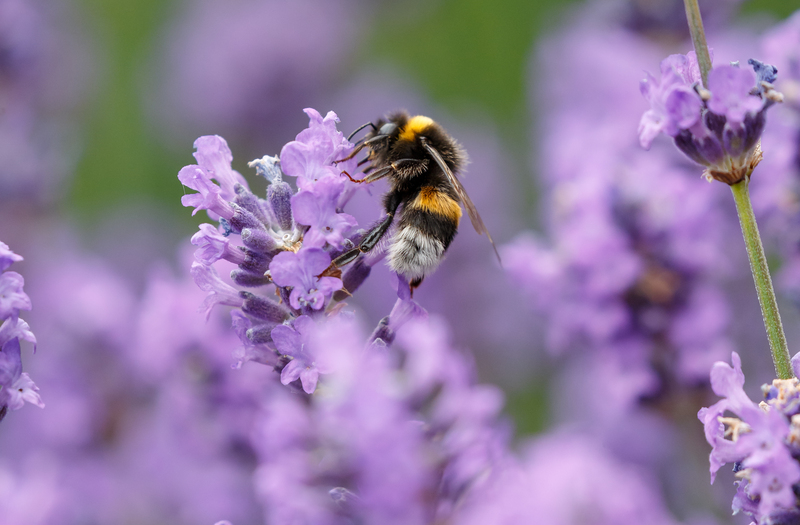Transforming Spaces: Gardens for Climate Action
Posted on 19/08/2025
Transforming Spaces: Gardens for Climate Action
Gardens have long been spaces of beauty, tranquility, and recreation. However, with the growing impact of climate change, these cherished green spaces have taken on a vital new role. Today, gardens are at the forefront of climate action--helping to reduce carbon emissions, support biodiversity, and foster community resilience. Transforming spaces through climate-conscious gardening offers powerful opportunities for both individuals and communities to make a tangible, positive impact on the planet.

Why Gardens Matter in Climate Action
Gardens do so much more than provide visual pleasure; they are dynamic ecosystems that interact with the environment in meaningful ways. By adopting sustainable gardening practices, we can:
- Capture and store atmospheric carbon
- Improve air and soil quality
- Reduce urban heat and regulate microclimates
- Enhance biodiversity and support endangered species
- Mitigate the impacts of extreme weather events
- Encourage sustainable food production
In this comprehensive guide, we explore how you can transform your garden--and community spaces--into gardens for climate action and become part of the global solution to climate change.
The Role of Gardens in Combating Climate Change
1. Gardens as Carbon Sinks
One of the core ways gardens contribute to climate action is through carbon sequestration. Plants absorb carbon dioxide as they grow, locking it in their leaves, roots, and surrounding soil. A thriving garden effectively acts as a "carbon sink," helping to draw down the levels of greenhouse gases in the atmosphere.
- Trees and shrubs are particularly effective due to their large biomass.
- Healthy soils--enriched through organic gardening methods--store even more carbon below ground.
2. Biodiversity Boosters
Climate-resilient gardens support diverse ecosystems. By planting a variety of native species, gardeners provide food and shelter for pollinators, birds, and beneficial insects. This rich biodiversity not only ensures garden health, but also helps ecosystems adapt and thrive as the climate changes.
3. Urban Cooling and Microclimate Regulation
Urban areas are subject to the "heat island" effect, where asphalt and concrete raise temperatures. Gardens help cool these environments by shading surfaces and transpiring water. A well-planned climate-friendly garden can lower local temperatures, reduce energy use for cooling, and create more comfortable neighborhoods.
4. Rainwater Management
Climate change leads to heavier rainfall and increased flooding. Sustainable gardens can absorb, filter, and slow stormwater runoff. Techniques such as rain gardens, permeable paths, and swales ensure that more water is stored in the ground, lessening the burden on sewage systems and preventing erosion.
Designing Gardens for Climate Action
Choose Native and Climate-Resilient Plants
Plants that are indigenous or adapted to your region require less water, fertilizer, and maintenance. They are more resistant to pests and weather extremes, making them ideal for a climate-adaptive garden. Some tips:
- Research native species or improved cultivars suited to your climate zone.
- Aim for a diversity of plant types--trees, shrubs, perennials, and annuals.
- Use plant groupings that mimic natural ecosystems, such as woodland borders or prairie meadows.
Practice Soil Health Management
Healthy soil is teeming with life, locking away more carbon and supporting lush plant growth. Building soil health involves:
- Add organic matter like compost and mulch
- Avoid chemical pesticides and fertilizers
- Practice no-till or minimal-till gardening
- Plant cover crops in off seasons
Reduce Lawn Area
Traditional lawns consume significant water, fertilizer, and fossil fuels for mowing. Transforming lawns into wildflower meadows, edible gardens, or native shrub beds offers more climate benefits:
- Wildflower meadows provide habitat for pollinators and birds
- Edible gardens support local food resilience
- Native shrubs increase biodiversity and carbon storage
Use Water Wisely
Water conservation is critical, especially in drought-prone regions. Implement the following water-smart strategies:
- Install a rainwater harvesting system
- Use drip irrigation and soaker hoses to minimize evaporation
- Group plants with similar water needs together
- Mulch garden beds to retain soil moisture
Eliminate Fossil Fuel Use
Switching to electric or manual tools for mowing and trimming, composting organic waste, and avoiding synthetic chemicals all contribute to reduced greenhouse gas emissions in your climate action garden.
Maximizing Biodiversity: A Key to Climate Approach
Biodiversity is at the heart of healthy, climate-resilient gardens. A diverse plant and animal community creates interdependence, making the space more adaptable to extreme weather, pests, and disease. Here's how to foster biodiversity:
- Plant a mix of flowering species that provide forage throughout the year
- Include host plants for butterfly and moth larvae
- Install birdhouses, bat boxes, and bee hotels
- Leave patches of bare ground for ground-nesting insects
- Create ponds or wetland areas to attract amphibians and beneficial insects
Why Native Plants Matter
Native plants are uniquely adapted to local soils and climate. They require fewer resources and provide critical habitat for birds, bees, and butterflies that can only use specific native species at certain life stages. Restoring native flora is a powerful form of local climate action.
Encouraging Natural Partnerships
By integrating layers of vegetation--canopy, shrub, and ground layer--you create a resilient ecosystem that mimics a natural forest or prairie. Companion planting pairs plants that benefit one another, such as marigolds deterring pests for tomatoes.
A Step-by-Step Plan for a Climate Action Garden
Step 1: Assess Your Site
Evaluate sun, shade, soil type, moisture, and existing vegetation. Understand your local climate challenges--drought, flooding, heatwaves, or cold snaps--and factor these into your planting decisions.
Step 2: Set a Vision and Goals
Define what climate outcomes you seek, such as:
- Reducing lawn area
- Capturing more rainwater
- Increasing pollinator habitat
- Producing food
Step 3: Design for Function and Beauty
Plan garden beds and features with multiple functions--for example, a hedgerow that serves as windbreak, wildlife habitat, and privacy screen. Integrate pathways, water features, and seating for accessibility and enjoyment.
Step 4: Plant for All Seasons
Select species with a range of bloom times, foliage textures, and heights to keep your garden engaging year-round and provide continuous resources for wildlife.
Step 5: Maintain Sustainably
- Use compost and mulches for fertility
- Minimize disturbance to soil and wildlife
- Regularly monitor plant health and diversity
- Allow some areas to go wild for habitat value
Transforming Community Spaces: Gardens as Collective Climate Solutions
Community Gardens for Resilience
Community gardens transform vacant lots, schoolyards, and shared spaces into productive green oases. They bring people together to grow food, foster biodiversity, and demonstrate climate solutions in action. Community gardens can reduce urban food miles, promote environmental education, and empower residents in sustainable living.
Public Green Infrastructure
Green roofs, living walls, rain gardens, and urban forests are forms of green infrastructure that municipalities are increasingly adopting for climate action and urban cooling. These gardens help manage stormwater, reduce heat, and provide habitat--creating healthier, more sustainable cities.
School and Youth Gardens
Engaging the next generation is vital. School gardens teach students about climate change, biology, and nutrition while cultivating a lifelong stewardship ethic. Gardens become living classrooms where the principles of climate action take root.
Healing and Therapeutic Gardens
Green spaces aid in healing both ecosystems and people. Therapeutic gardens in hospitals, care homes, and public parks provide relaxation, stress relief, and social connection--building mental health resilience as climate challenges mount.
Climate Action Gardens in Every Climate Zone
From deserts to rainforests, every garden can be tailored for maximum climate benefit:
- Desert gardens use drought-tolerant plants, mulching, and rainwater capture.
- Temperate gardens focus on perennial diversity, composting, and mixed borders.
- Tropical gardens can incorporate forest gardening, shade crops, and layered planting.
- Cold climates emphasize windbreaks, cold frames, and perennial food systems.

Getting Involved: Take Action Today
Your Personal Garden Climate Pledge
Everyone has a role to play. Start by taking a "Garden Climate Pledge"--commit to a few changes each year such as adding native plants, installing a rain barrel, or reducing pesticide use. Use social media to inspire friends and neighbors!
Connect with Local Organizations
Join local horticultural clubs, native plant societies, or "Friends Of" park groups to access resources and training on climate-smart gardening. Many offer seed swaps, plant sales, and volunteer days for community projects.
Share Your Success
Document your climate action garden with photos, maps, and observations. Share your stories online, or enter local garden shows with a sustainability theme.
The Future of Gardens for Climate Action
As urbanization grows and the climate crisis deepens, gardens are poised to become more important than ever. By transforming our private and public green spaces, we can collectively reduce emissions, build ecological networks, and create climate-resilient communities.
Imagine every school, park, and backyard brimming with native plants, supporting pollinators, cooling the city, and feeding people. This vision is within reach--one garden at a time.
Key Takeaways for Transforming Spaces Through Gardens for Climate Action
- Gardens are powerful tools for climate mitigation and adaptation.
- Diverse, native plantings support biodiversity, carbon sequestration, and resilience.
- Redesigning and maintaining gardens with climate-friendly practices brings benefits at individual and community scales.
- Community engagement amplifies the impact of climate action gardens in urban and rural areas alike.
Start your journey today! With each seed sown, tree planted, and pollinator welcomed, you are contributing to a more resilient and sustainable future. Gardens for climate action are more than a trend--they are a global movement rooted in hope, beauty, and the power of collective change.

